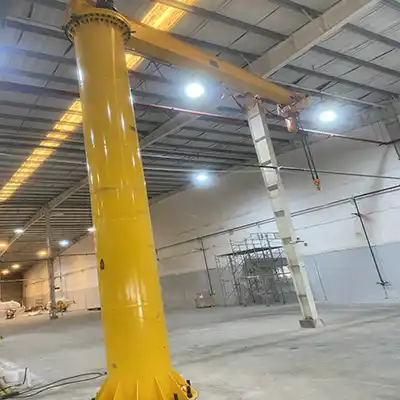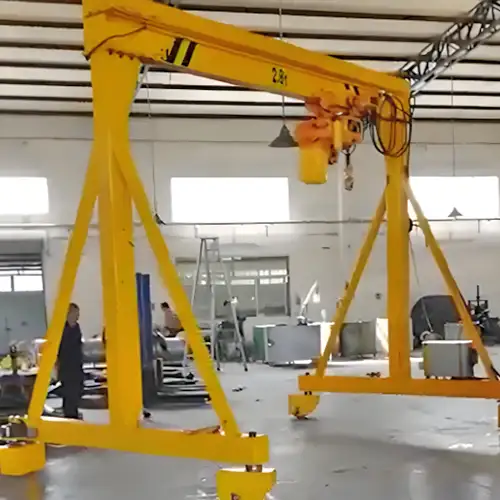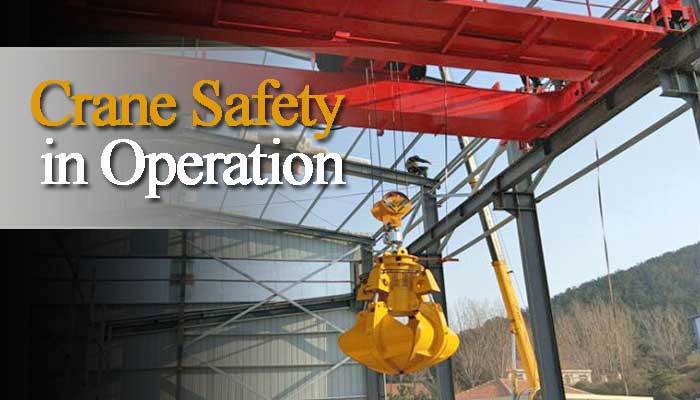
Overhead Crane Operation Safety- Overhead Travelling Crane Safety Tips
For lifting and handling huge objects and commodities, overhead cranes are an essential feature of any enterprise. There are some objects that the workers are unable to lift. As a result, overhead cranes are necessary, which makes the operation easier and increases production. Overhead cranes assist in the prompt and effective lifting and carrying of huge loads. Typically, an overhead crane is used to lift and unload small or bulky objects.
Overhead cranes come in a variety of shapes and sizes. When loading or unloading products from a truck, transporting materials from one site to another, moving containers around a shipyard or railyard, and moving pieces or parts down an assembly line, overhead cranes come in useful. Mishandling overhead cranes, on the other hand, can result in serious injuries and accidents.
As a result, overhead cranes must be operated with extreme caution, and safety precautions must be followed to avoid workplace catastrophes. Every year, roughly 44 individuals are injured or killed, according to statistics. When utilized improperly, overhead cranes can pose a major risk to persons and property. In order to operate an overhead crane safely, various safety precautions must be followed.
What's An Overhead Crane ? Part 1: Overhead Crane Benifits & Application - Overhead Crane Basics
What's An Overhead Crane ? Part 1: Overhead Crane Benifits & Application - Overhead Crane Basics
Material handling safety in overhead crane operations
How to ensure your materials handling safety in overhead crane operation? In the following the tips are presented for your reference during the operation of overhead crane.
What should you do before moving a load?
- Make sure you have the necessary training, credentials, or certification to operate the crane, as specified by your jurisdiction.
- Ensure that the crane is capable of lifting and transporting the load.
- Ensure that the job site is well-planned and organized. Make sure there's enough area for emergency vehicles to get in. Working near overhead electrical lines, for example, is not recommended.
- To maintain stability, check the ground conditions.
- Before using the crane, visually inspect it.
- Before lifting the cargo, make sure any loose materials, pieces, blocking, and packing have been removed.
- Before lifting the cargo, remove any slack from the sling and hoisting ropes.
- Make sure the lifting device is seated in the hook's saddle.
- Make sure the load does not exceed the maximum load capacity.
How should you move loads safely?
- Smoothly move the crane controls. Avoid moving the load in rapid, abrupt motions.
- Except for a stop signal, only follow signals from one slinger in command of the lift.
- Use signals that have been agreed upon.
- Before hoisting, make sure everyone is away from the load. Start hoisting carefully after sounding a bell, siren, or other warning device.
- Ensure that all slings, hooks, hardware, and other accessories are appropriate for the load being lifted, are in good operating order, and that all sling angles are correct.
- While elevating or traveling with the weight, be sure nothing connects or catches on it.
- Ensure that nothing is in the way of a load's movement.
- Before continuing with the lift, lift the weight a modest bit to ensure that the braking system is working properly.
- When reducing a load, keep it under control. The load can typically be decreased by reversing the hoist controller to the first or second point if the brake mechanism fails.
- Set the load on blocking rather than the sling.
- Lower the weight to a point where there are no more than two full wraps of wire rope left on the drum.
- During a power outage, stay in a crane cab. Place the controls in the "off" position, draw attention to yourself, and wait for assistance.
What should you do before leaving the crane?
- Remove the weight that is dangling from the crane hooks.
- Raise all hooks to around mid-height.
- Locate the crane at a specific area.
- Ensure that all controllers are in the "off" position before closing the main switch.
What should you avoid when operating an overhead crane?
- When climbing and descending ladders, keep your hands free. Rope should be used to lift or lower items that are too large to fit into pockets or belts.
- If the limit switches are broken or the wires are damaged, do not operate the crane.
- Lower the blocks only as far as there are less than two full wraps of cable left on the drum.
- Do not attempt lifts that exceed a crane's or slings' rated load capacity.
- Lifting a burden from the side is not recommended. To avoid swaying the weight, place the crane directly above it before raising.
- Allow no one to ride on a load or on the hooks.
- Slings should not be dangling from the load hook. Have sling hooks set on the sling ring while conveying slings to the load.
- To clear items, do not boost loads higher than necessary.
- Moving or passing a load over workers is not a good idea.
- Except to avert accidents, do not reverse an engine until it has come to a complete stop.
- The crane runway should not be walked on.
- It is not a good idea to leave dangling loads unattended.
Safety tips for overhead crane operations
If you work with cranes or are in the construction industry, it is critical to be aware of potential hazards and problems in order to safeguard people's safety. To minimize workplace mishaps, let's go over some of the most common safety recommendations for overhead crane operations.- The first thing to verify is that the equipment is operated by qualified individuals who have received sufficient training and certification. To handle such sophisticated and heavy gear safely, specialist knowledge is required. As a result, it is necessary to ensure that the personnel who use the equipment are well-trained and knowledgeable about how to use it. They should be well-versed in all of the basic hand signals used in crane operations.
- They should be aware of the location of every equipment. When operating the crane, they should know how to take the necessary safety precautions and procedures. It should be required to have a thorough understanding of lifting operations rules and regulations, as well as the lifting equipment regulation of 1998.
- It is also critical that the equipment be thoroughly inspected prior to use. If the equipment is broken or worn out, it should be repaired and maintained on a regular basis. It is important to ensure that the load does not exceed the equipment's capacity in order to avoid harm or mishap. Before the equipment's final operation, a comprehensive check and inspection of the equipment and the load is required.
- Ensure that workers are aware of the crane operation area and are not standing under a crane or in areas where loads are being overheard. They should be reminded to stay away from the cranes when they are in use. The lifting of the equipment should be planned ahead of time so that workers are aware of how they should avoid standing near the crane's operational area.
- Proper warning signals should be posted on the sites to advise people not to go there and to be informed of the dangers. Workers should put on suitable protective gear, such as masks, gloves, and footwear, to ensure their safety and security.
- Use caution and patience when operating the crane. To avoid any mishaps, adequate time should be set aside. The operations should be scheduled ahead of time to allow for adequate time and safeguards to assure safety.
Other safety tips for overhead crane operation
- The employer must have a valid crane operator's license.
- The crane must be handled with extreme caution and patience. To avoid any mishaps, adequate time should be set aside. The operations should be scheduled ahead of time to allow for adequate time and safeguards to assure safety.
- Choose the appropriate sling for each lift. Before using the sling, inspect it and the hardware for wear, stretch, and other damage. Do not use slings that are damaged or faulty.
- Routine maintenance and repairs of all on-site equipment must also be performed at regular intervals.
- The presence of a supervisor is also required to ensure that the operations run smoothly and without damage.
- Observe the surface on which the crane is operating. The soil must be classified, and the material under the crane must be understood in relation to the loads and restrictions.
Conclusion
Overhead cranes are unquestionably an important component of industry, and they have made life more easier and more comfortable. The big loads may be lifted quickly and easily. However, crane safety and correct operation are also required. Such dangers and catastrophes can be prevented and minimized by taking adequate safety precautions and following safety advice for overhead crane operating at work.
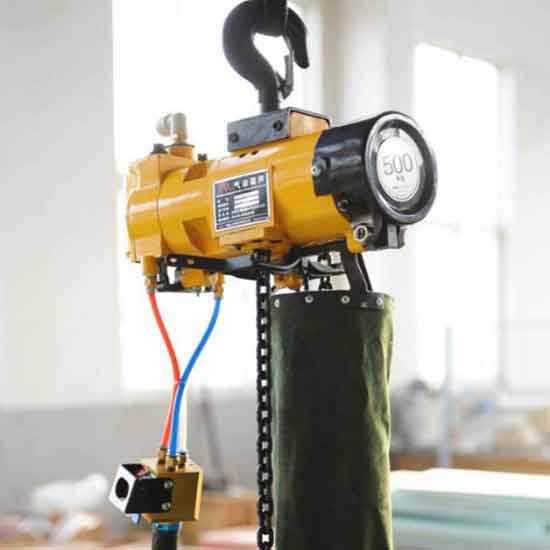
Air hoist & pneumatic hoist is a compressed air powered hoist & air operated hoists, various hoist designs,wide specification, good price.

European single girder overhead cranes, compact FEM hoist crane design, small & light overhead hoist crane.
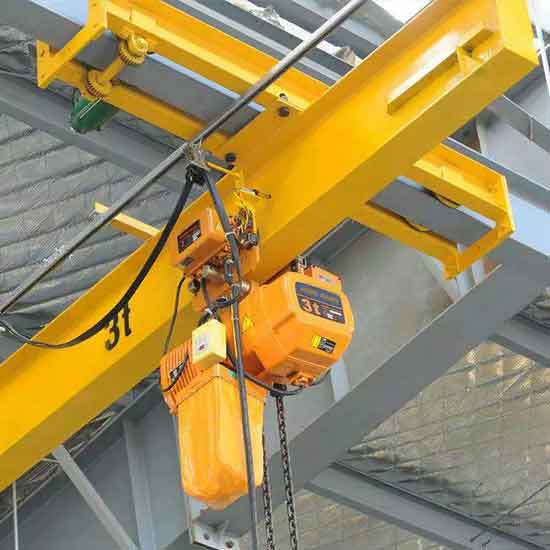
1 ton -10 ton underhung bridge crane, light single girder overhead crane design, suspended on overhead roof, free floor space, economical underhung crane.
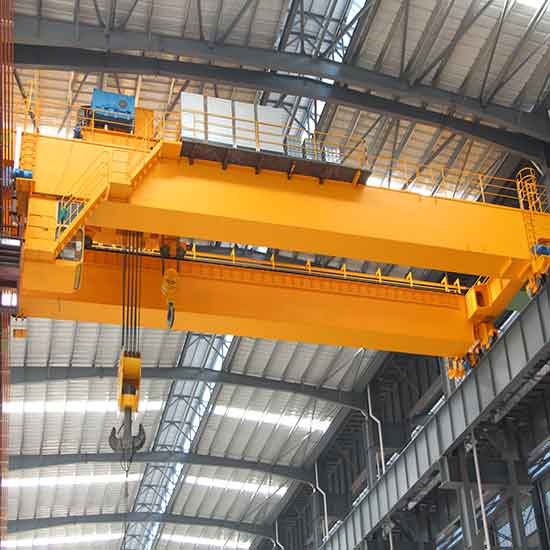
European winch trolley, Heavy duty hook cranes:European standard double girder overhead crane with open winch trolley, your heavy duty winch crane up to 320 ton.
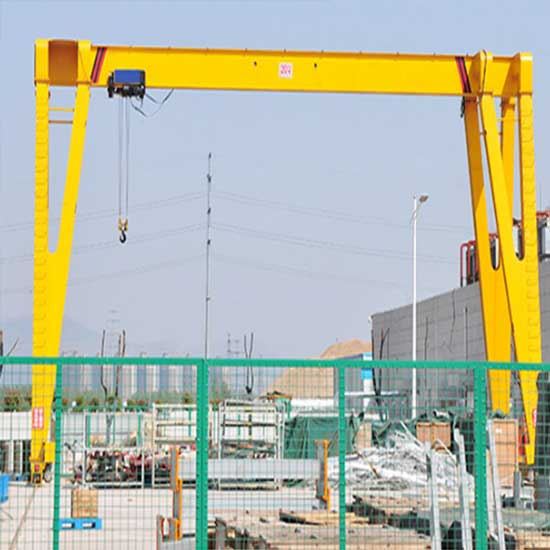
Single beam gantry cranes, European style box girder, FEM hoists for 3 ton, 5 ton, 10 ton, & 16 ton load handling.

European type double girder gantry cranes with FEM standard wire rope hoists trolley with capacity of 5 ton up to 75 ton for sale.
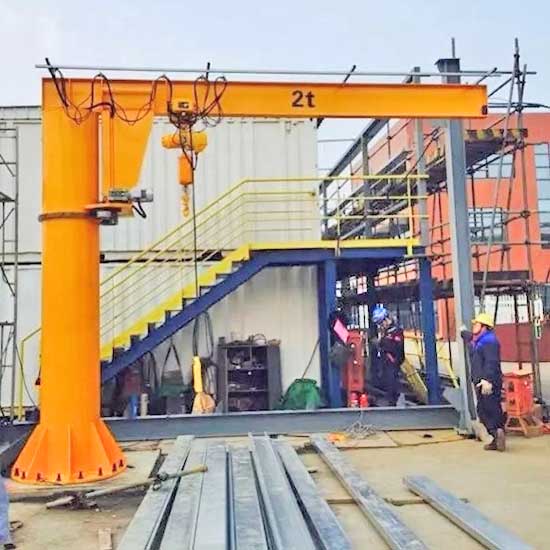
Pillar mounted jib crane is a free standing jib crane with pillar jib mounted on floor, for short & crowded lifting, capacity up to 16 ton.
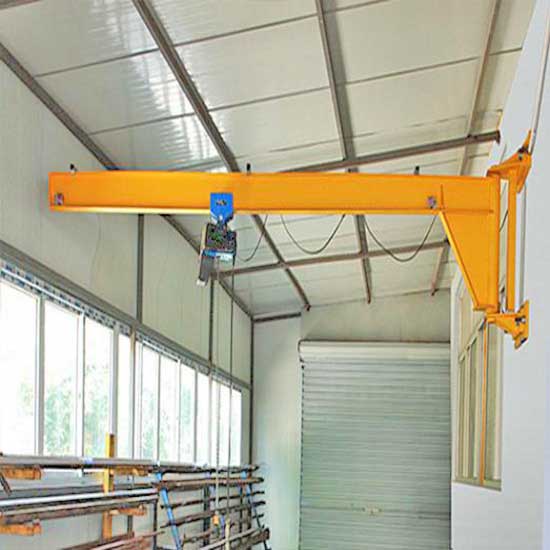
Wall mounted jib crane & wall bracket jib crane with I beam & tie rod design for light duty handling with capacity up 2 ton.
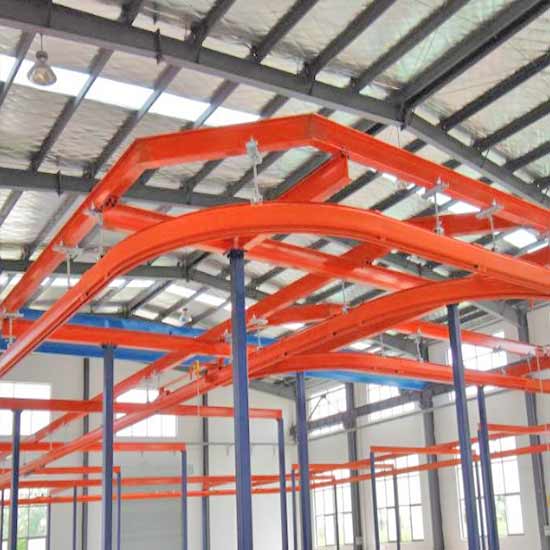
kbk light crane systems, flexible kbk crane & rigid kbk crane, modular crane design, cost-effective workstation crane solution, tailored light duty bridge crane.
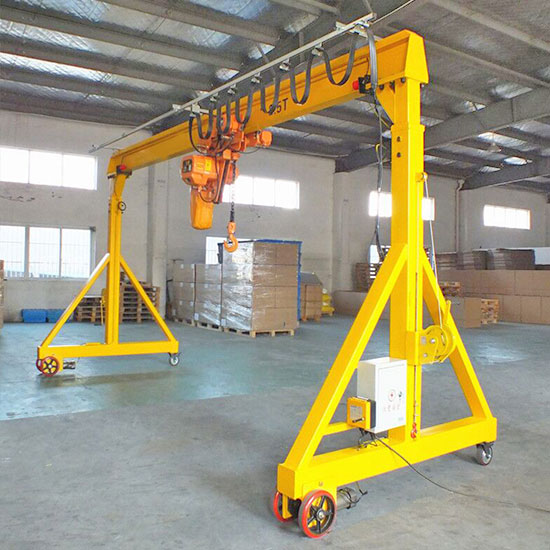
250 kg - 10 ton portable gantry cranes & mobile gantry cranes with adjustable / fixed gantry for small & light material handling.
